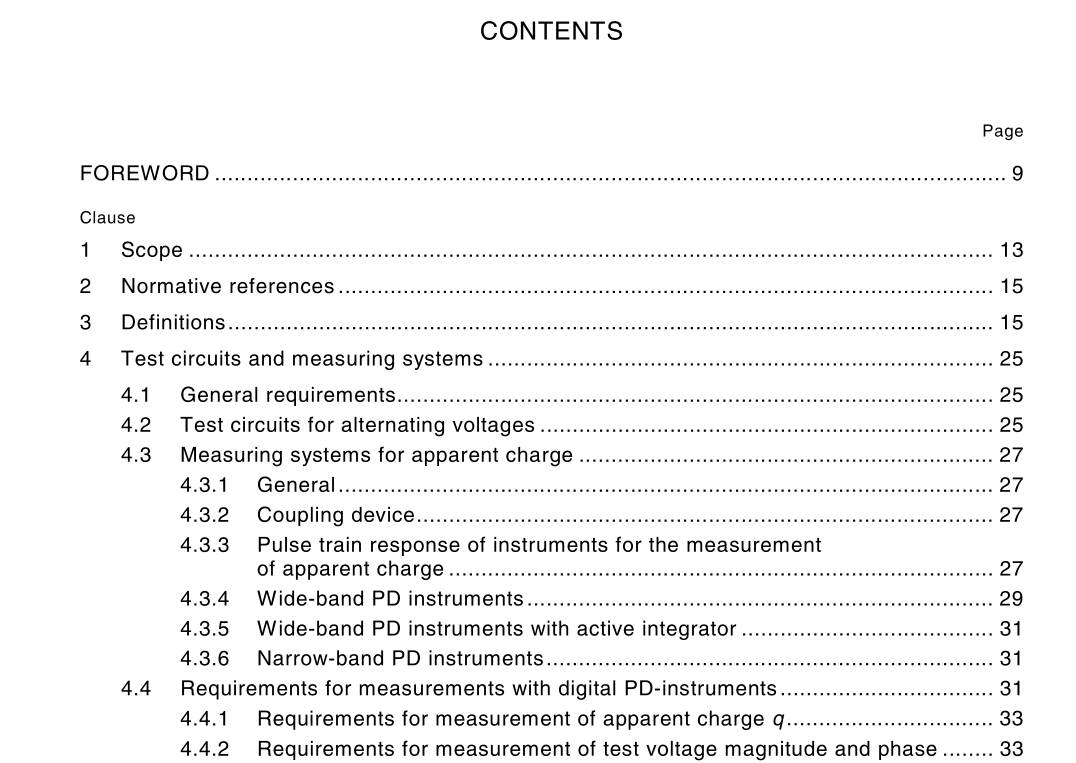IEC 60270 pdf download

IEC 60270 pdf download.High-voltage test techniques – Partial discharge measurements
1 Scope
This International Standard is applicable to the measurement of partial dis charges which occur in electrical apparatus, components or systems when tested with alternating voltages up to 400 Hz or with direct voltage. This standard – defines the terms used; – defines the quantities to be measured; – describes test and measuring circuits which may be used; – defines analogue and digital measuring methods required for common applications; – specifies methods for calibration and requirements of instruments used for calibration; – gives guidance on test procedures; – gives some assistance concerning the discrimination of partial dis charges from external interference. The provisions of this standard should be used in the drafting of specifications relating to partial dis charge measurements for specific power apparatus. It deals with electrical measurements of impulsive (short-duration) partial dis charges , but reference is also made to non-electrical methods primarily used for partial dis charge location (see annex F). Diagnosis of the behaviour of specific power apparatus can be aided by digital processing of partial dis charge data (see annex E) and also by non-electrical methods that are primarily used for partial dis charge location (see annex F). This standard is primarily concerned with electrical measurements of partial dis charges made during tests with alternating voltage, but specific problems which arise when tests are made with direct voltage are considered in clause 11. The terminology, definitions, basic test circuits and procedures often also apply to tests with other frequencies, but special test procedures and measuring system characteristics, which are not considered in this standard, may be required. Annex A provides normative requirements for performance tests on calibrators.
3 Definitions
For the purpose of this International Standard, the following definitions apply. 3.1 partial discharge (PD) localized electrical discharge that only partially bridges the insulation between conductors and which can or can not occur adjacent to a conductor NOTE 1 Partial discharges are in general a consequence of local electrical stress concentrations in the insulation or on the surface of the insulation. Generally, such discharges appear as pulses having a duration of much less than 1 µs. More continuous forms can, however, occur, such as the so-called pulse-less discharges in gaseous dielectrics. This kind of discharge will normally not be detected by the measurement methods described in this standard. NOTE 2 “Corona” is a form of partial discharge that occurs in gaseous media around conductors which are remote from solid or liquid insulation. “Corona” should not be used as a general term for all forms of PD. NOTE 3 Partial discharges are often accompanied by emission of sound, light, heat, and chemical reactions. For further information, see annex F. 3.2 partial discharge pulse (PD pulse) current or voltage pulse that results from a partial discharge occurring within the object under test. The pulse is measured using suitable detector circuits, which have been introduced into the test circuit for the purpose of the test NOTE A partial discharge which occurs in the test object produces a current pulse. A detector in accordance with the provisions of this standard produces a current or a voltage signal at its output, proportional to the charge of the current pulse at its input.
3.3 quantities related to partial dis charge puls es 3.3.1 apparent charge q of a PD puls e is that charge which, if injected within a very short time between the terminals of the test object in a specified test circuit, would give the same reading on the measuring instrument as the PD current puls e itself. The apparent charge is usually expressed in picocoulombs (pC) NOTE The apparent charge is not equal to the amount of charge locally involved at the site of the discharge, which cannot be measured directly. 3.3.2 puls e repetition rate n ratio between the total number of PD puls es recorded in a selected time interval and the duration of this time interval NOTE In practice, only pulses above a specified magnitude or within a specified range of magnitudes are considered.









